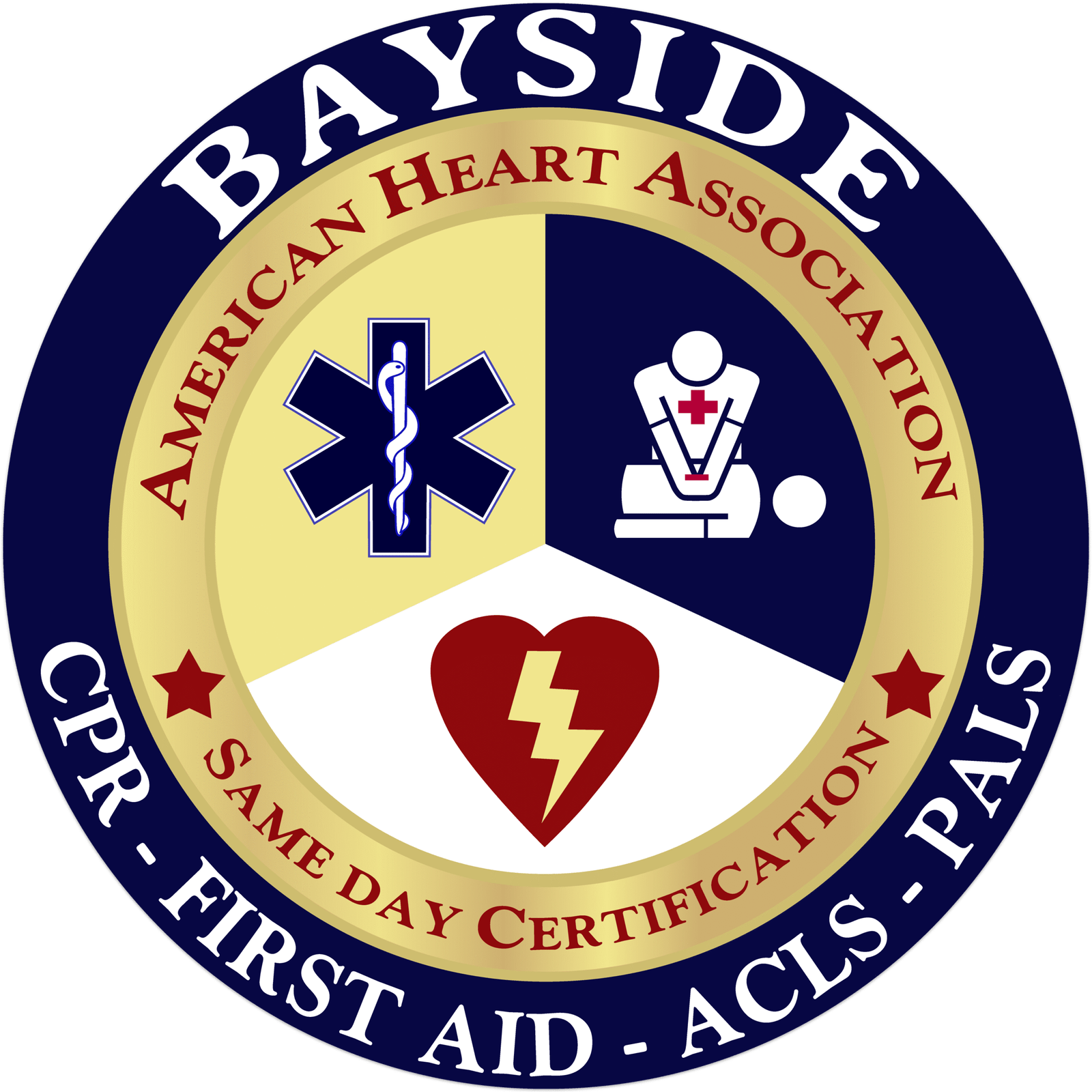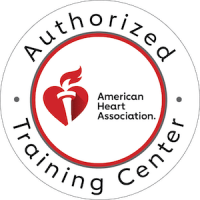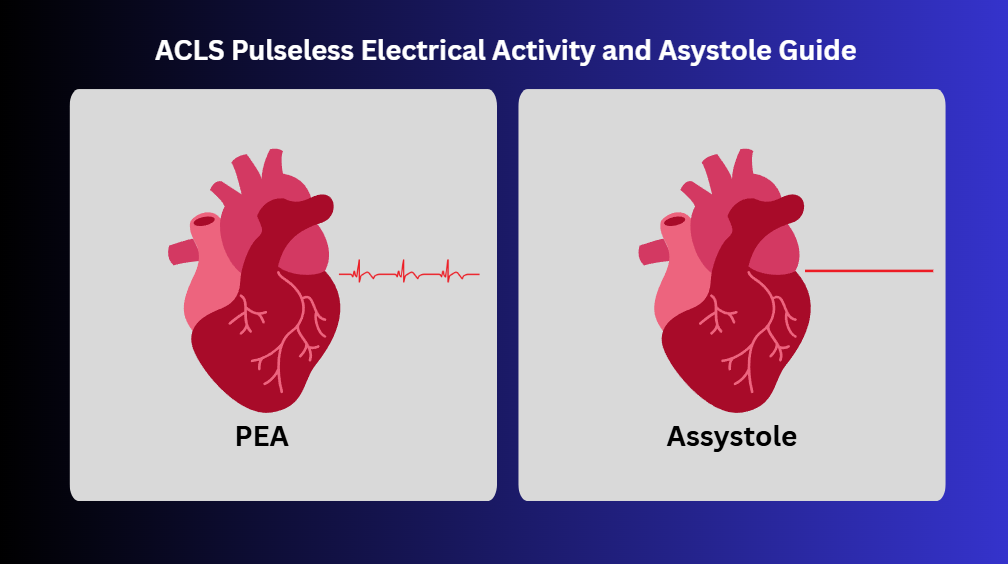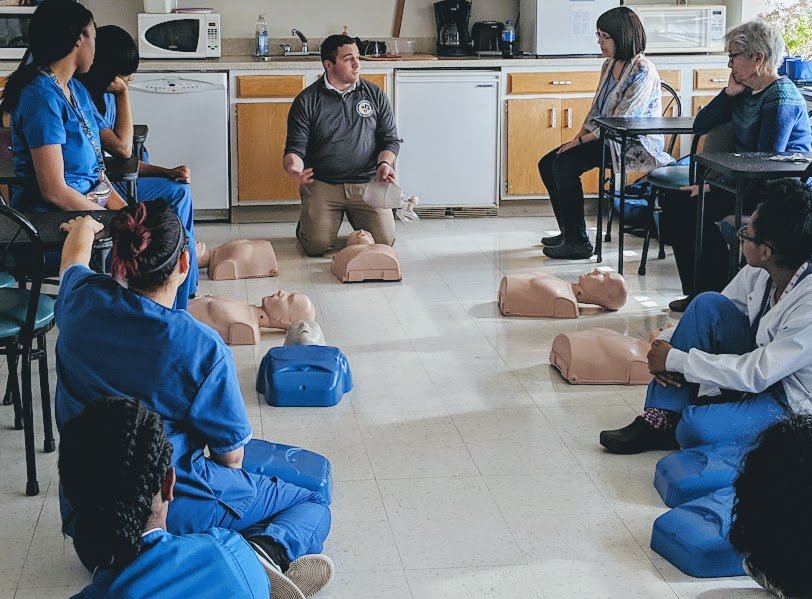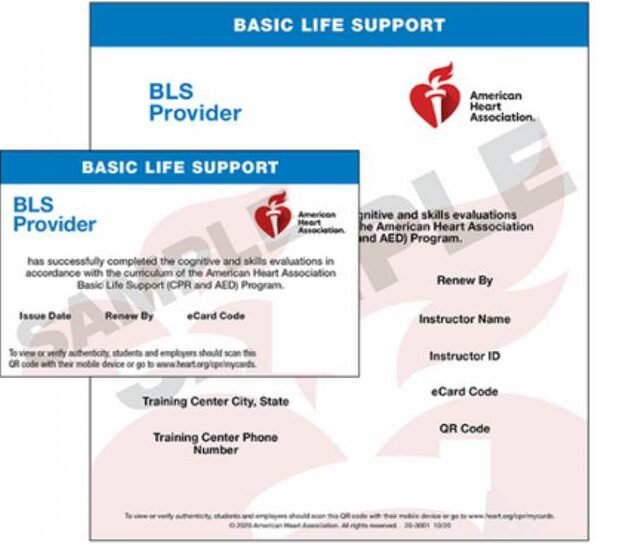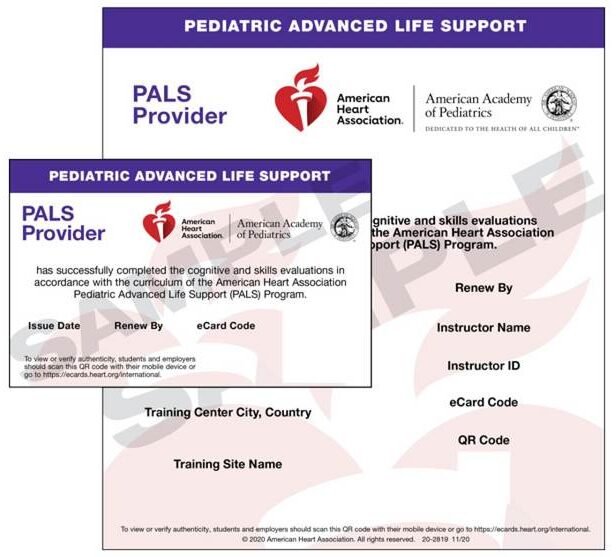When someone’s heart suddenly stops beating, every second counts. Pulseless Electrical Activity and Asystole are two serious conditions where the heart either shows electrical signals without a pulse or completely stops all activity. These two are the most serious cardiac arrest rhythms and require immediate intervention. If not treated immediately, it can lead to sudden cardiac death. Advanced Cardiovascular Life Support, or ACLS, plays a vital role in these emergencies by providing healthcare providers with the tools and techniques needed to quickly assess and treat patients. A crucial part of this process involves accurate ECG (electrocardiogram) rhythm recognition and interpretation, which helps guide timely and effective interventions. This guide will walk you through the key steps in recognizing and managing these situations, breaking down complex information into easy-to-understand advice. Whether you’re a healthcare professional or just want to be prepared, you’ll find helpful tips here to boost your confidence in critical moments.
What is Pulseless Electrical Activity (PEA)?
Pulseless Electrical Activity (PEA) happens when the heart’s electrical system seems to be working, but the heart muscle isn’t responding. You might see a cardiac rhythm on the monitor, but there’s no pulse, no blood flow, and the patient is not responsive. PEA can be caused by a variety of reversible conditions, which are often remembered using the “H’s and T’s” mnemonic, such as hypovolemia (low blood pressure), tension pneumothorax (lung collapsed), or cardiac tamponade (fluid around the heart). Recognizing and treating these underlying causes quickly is critical because PEA itself is not a shockable rhythm. Instead, treatment focuses on high-quality CPR, administering epinephrine as soon as possible, and addressing the root cause to restore effective circulation. Prompt identification and intervention can make the difference between recovery and irreversible cardiac arrest.
How to Recognize PEA?
- The person is unresponsive and not breathing normally.
- There’s no pulse, even though a rhythm shows on the monitor.
- The rhythm can look slow or fast, regular or irregular — it doesn’t matter. If there’s no pulse, it’s considered PEA.
What is Asystole?
Asystole, commonly known as “flatline,” is the complete absence of electrical activity in the heart. There’s no rhythm, no pulse, and no blood being pumped. It’s one of the most difficult rhythms to recover from, but immediate action can still make a difference. When asystole is identified, the priority is to start high-quality CPR right away. Common causes of it are trauma to the heart or chest, hypothermia (low body temperature), dehydration, medication side effects, substance use, and electrolyte imbalances, particularly potassium. Defibrillation is not indicated in asystole, as there is no electrical activity to reset. Instead, prompt administration of epinephrine every 3-5 minutes during resuscitation combined with continuous compressions and effective ventilation offers the best chance of restoring a viable rhythm.
How to Recognize Asystole?
- The ECG (heart monitor) shows a flat line.
- The person is not breathing and has no pulse.
- The monitor may show slight movement, but if there’s no organized activity and no pulse, it’s Asystole.
Asystole, like PEA, does not respond to shocks. This makes early CPR and finding the underlying cause all the more important.
What To Do: First Steps in a PEA or Asystole Situation
When someone’s heart has stopped beating normally, every second counts. Stay calm, act fast, and follow these first steps to give them the best chance.
- Start CPR right away – Push hard and fast in the center of the chest.
- Call for help and get emergency equipment – Use a bag-mask to give breaths.
- Attach a monitor or defibrillator – Check for rhythm. If it’s not shockable (PEA or Asystole), continue CPR
- Give Epinephrine – 1 milligram by IV or IO (into bone) every 3–5 minutes.
- Keep going with CPR – Pause every 2 minutes to check the rhythm and pulse.
- Look for what caused the arrest – Certain problems can be reversed if treated quickly.
Finding the Cause: The Hs and Ts
In many cases, PEA or asystole happens because of something else going wrong in the body. If you can fix the cause, the heart may start working again. The most common causes fall into two groups—often called “Hs and Ts.”
Hs:
- Low blood volume (Hypovolemia) – Can happen from bleeding or dehydration.
- Low oxygen (Hypoxia) – The heart and brain need oxygen to work.
- Too much acid in the body (Acidosis) – Common in long arrests or illness.
- Potassium imbalance (Hyperkalemia or Hypokalemia) – Affects heart rhythm.
- Low body temperature (Hypothermia) – Especially in cold environments.
Ts:
- Air trapped in the chest (Tension pneumothorax) – Can compress the heart.
- Fluid around the heart (Cardiac tamponade) – Stops the heart from pumping.
- Poison or overdose (Toxins) – Some drugs can stop the heart.
- Blood clot in the lungs (Pulmonary embolism) – Blocks oxygen flow.
- Heart attack (Thrombosis of coronary artery) – Cuts off blood to the heart.
If you can find and fix one of these causes, the person’s chances of survival go up.
Treatment Overview for PEA and Asystole
| Step | What To Do |
| CPR | Start immediately. Push hard and fast, 100–120 times per minute. |
| Breathing | Give 1 breath every 6 seconds once airway is secured. |
| Medication | Give Epinephrine 1 mg every 3–5 minutes. |
| Rhythm Check | Every 2 minutes, pause CPR briefly to check. |
| Cause | Identify and treat the underlying issue (from the Hs/Ts list). |
| Shocks | Do not shock PEA or Asystole. Only shock certain other rhythms. |
How Long Should You Continue?
There’s no exact time limit, but here are a few points to consider:
- If there’s no improvement after 20–30 minutes, and no reversible cause is found, it may be time to stop.
- Decisions should be based on the situation, how quickly care was started, and the overall condition of the person.
Always involve a senior clinician or medical team leader in this decision.
Key Differences Between PEA and Asystole
| Feature | PEA | Asystole |
| ECG | Shows a rhythm | Flat line |
| Pulse | None | None |
| Shockable | No | No |
| Main focus | CPR + find cause | CPR + find cause |
Common Misunderstandings in Heart Rhythm Recognition
Sometimes heart rhythms can be tricky to read, and mistakes happen when you rush or rely only on the monitor. PEA and asystole are often confused, so it’s important to slow down and check what’s going on.
- PEA is often mistaken for a shockable rhythm because organized electrical activity may appear normal on the monitor.
- Asystole can be misread as fine ventricular fibrillation, leading to inappropriate defibrillation attempts.
- Clinicians sometimes fail to check for reversible causes, assuming PEA or asystole is always terminal.
- Artifact or poor electrode contact can mimic PEA or asystole, causing misdiagnosis.
- Rapid rhythm assessment without a pulse check can lead to confusing pulseless electrical activity with effective perfusion.
Final Thoughts
Both PEA and Asystole are severe emergencies that require fast thinking and calm teamwork. While these rhythms are more challenging to treat than shockable ones, survival is still possible, especially if the underlying cause is identified and corrected promptly. Patient outcomes are dependent on identifying and correcting the underlying cause of this rhythm and performing effective cardiopulmonary resuscitation (CPR).
Remember:
- Start CPR immediately
- Give Epinephrine as early as possible
- Search for causes and fix what you can
- Don’t give up too early, but know when to stop
Staying calm, knowing the steps, and acting quickly can give someone the best chance to survive a sudden cardiac arrest.
